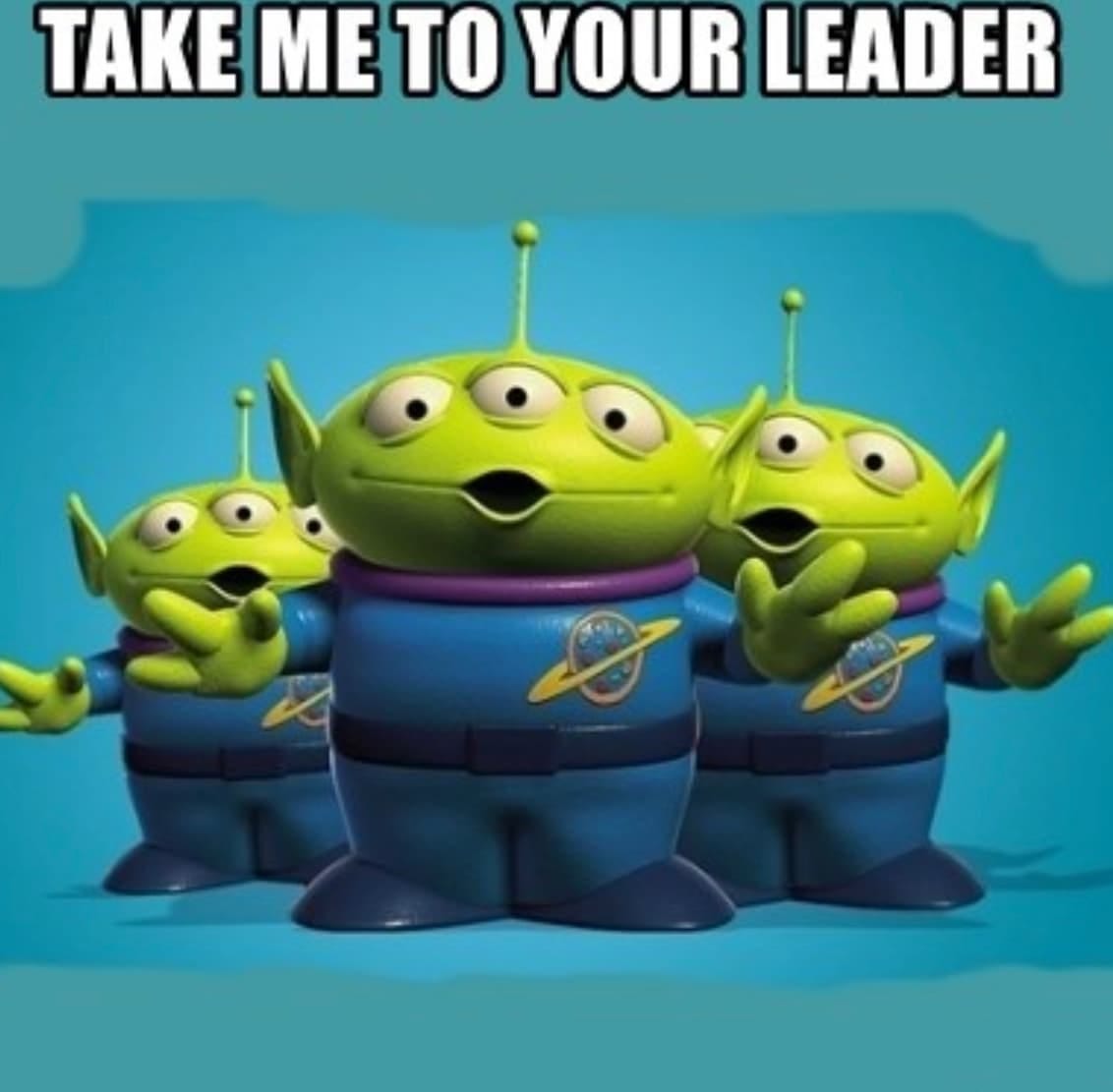Why so bossy?
The boss of the bosses who boss all of the other bosses
To me, that's how the title CEO translates. Each word in that acronym is another word for some type of boss.
Per Merriam Webster for each word in the title acronym:
Chief = the head of a body of persons or an organization
Executive = one that exercises administrative or managerial control
Officer = one who holds an office of trust, authority, or command
Can my company be different?
Note: When this original post was published in 2024, I was the CEO of a startup called Strevion. The intro to why I created that company was captured in my original post “Temet Nosce”. I later closed that business, for various reasons outlined in the post, “Metallica and Me”, and then after some serious introspection, I pivoted to focus on this publication venture outlined in “Defining Moments”.
I am the "CEO" of my startup, Strevion, even though it doesn't mean much given how tiny the company is at the moment...I'm the boss of myself (which is interesting when I don't want to do what I tell myself to do 🤔 )
However, as I plan out the leadership team for when the company grows, I don't want to have a CEO for several reasons (and that applies to me as the founder too).
One reason = Balance
To quote Mr. Miyagi "Better learn balance. Balance is key. Balance good, karate good. Everything good. Balance bad, better pack up, go home".
Let’s start this train of thought with some AI-generated rocks stacked on each other.
If you want to stack a bunch of rocks on each other into a tower, usually each additional rock is smaller than the previous one until the very top one is the smallest.
However, how many of you would then start adding a few larger rocks on that top, small rock? How many larger rocks can you add at the top before it comes crashing down?
To a certain extent, this is how corporations are organized.
On the very top are a few large rocks that represent shareholders. Below those large rocks are some that are slightly smaller representing the board of directors. Underneath that rock is one small rock...representing the CEO.
After the CEO the rocks start getting bigger again, representing layers of leadership until the largest, stabilizing rock at the bottom represents all of the front-line staff.
The CEO position seems pretty precarious to balance pressures from above with pressure from below (not to mention windy conditions symbolizing pressures coming from other external stakeholders).
As we look to the future...do we need this organizational design to continue?
Is it still necessary to have "one ring to rule them all?"
Hypothetical Scenario
This is just an initial thought on the subject as I research the idea in more depth. For now, here is a hypothetical decision scenario of the type of decision (a major partnership) a CEO could make in the current structure and what it may look like without a CEO. Then I provide some criticisms of the idea, to help with additional analysis and a future post.
Traditional CEO Decision-making Scenario:
In the traditional hierarchical model, the CEO would be solely accountable for the evaluation of the potential strategic partnership, negotiating terms, and making the final decision. The CEO would gather input from relevant stakeholders and advisors, and facilitate discussions about the subject in meetings. However, ultimately, the final decision rests with the CEO.
Collaborative Decision-making Scenario with C-level Leaders:
In the collaborative governance model, just like in the traditional model, the decision to pursue a strategic partnership would involve input from multiple stakeholders, especially the C-level executives, and multiple deliberations. Each executive would bring their expertise to the table, providing insights into the strategic, operational, financial, and legal aspects of the partnership. However, the final decision wouldn’t be made by one individual.
Balancing Perspectives
Below are some examples of what other members of the C-suite would bring to the table in both decision models.
The Chief Operating Officer (COO) might assess the operational feasibility of integrating the partner's products or services into the company's existing infrastructure.
The Chief Financial Officer (CFO) would evaluate the financial implications, including potential costs, revenue projections, and return on investment.
The Chief Legal Officer (CLO) would review the legal aspects of the partnership, including contractual agreements, compliance requirements, and potential risks.
The Chief Marketing Officer (CMO) might analyze the strategic fit with the company's brand positioning, market opportunities, and potential for customer acquisition.
The Chief Information Officer (CI) might analyze how the partner would integrate their data and systems with the company and any cybersecurity risks of the partnership.
Once all relevant information has been presented and discussed, the C-level executives would collectively vote on whether to proceed with the partnership. Various voting methods could be used, including a weighted method if the organization deems certain factors to be more important than others. One important aspect of this system is recording votes to make the group decision transparent.
In the event of disagreements:
Disagreements among the C-level executives could be resolved through constructive debate and dialogue, with each executive presenting their rationale and supporting evidence.
If consensus cannot be reached, a predetermined conflict resolution mechanism could be employed, such as seeking input from an advisory board, conducting further analysis, or deferring the decision to a later date for additional deliberation.
Ultimately, the goal is to arrive at a decision that reflects the collective wisdom and expertise of the executive team, balancing the interests of the company as a whole.
By involving multiple perspectives and expertise in the decision-making process, companies can make more informed and robust decisions while fostering a culture of collaboration and shared accountability among senior leadership.
Criticisms
Several criticisms can be made about attempts to replace the CEO position via a combination of new expectations for other leaders of the organization and modified frameworks for collaboration, group decision-making, and accountability.
However, this post will focus principle of Unity of command.
Unity of command
Unity of command is an important principle in organizational behavior that emphasizes the importance of employees receiving direction from only one superior. This principle aims to avoid confusion, conflicting instructions, inefficiencies that can arise when employees report to multiple superiors, and delays from too many cooks in the kitchen. The organizational dynamics and associated benefits of this principle can vary at different levels of the organization.
Lower Levels of Management (Frontline Supervisors):
Importance of Unity of Command: At lower levels of management, such as frontline supervisors or team leaders, unity of command is crucial for maintaining operational efficiency and ensuring clear direction for employees directly involved in executing tasks. These managers are responsible for overseeing day-to-day operations and coordinating the efforts of frontline workers.
Clear Benefits: The benefits of unity of command at this level include clarity, consistency, and accountability. Frontline supervisors provide direct guidance to employees, ensuring that tasks are completed according to organizational standards and objectives. Clear communication channels enable supervisors to address issues promptly, make real-time decisions, and maintain high levels of productivity within their teams. The benefit of prompt and quick decision-making bears repeating because operational decisions often can’t wait for a group consensus and dialogue. In addition to the knowledge, skills, and abilities of supervisors and managers to aid quick decisions, documented policies and procedures for routine issues also help speed execution with less need for collaborative decisions.
Middle Levels of Management (Departmental Managers):
Importance of Unity of Command: In middle management roles, such as departmental managers or functional heads, unity of command remains essential for coordinating activities within specific departments or functional areas. These managers are responsible for implementing organizational strategies, overseeing larger teams, and ensuring alignment with broader organizational goals. They also funnel important information from lower levels of the organization back up the leadership chain.
Somewhat Clear Benefits: At this level, unity of command facilitates effective coordination, communication, and decision-making within departments or functional units. Departmental managers can translate organizational objectives into actionable plans, allocate resources efficiently, and monitor performance effectively. Clarity of direction and accountability foster a culture of responsibility and ownership among employees, driving performance and achieving departmental objectives. However, some decisions do not require as much speed to make such as those in lower levels, so there are more opportunities to consider other inputs and perspectives.
Top Levels of Management (Executive Leadership):
Importance of Unity of Command: At the top levels of management, including executive leadership positions such as CEOs and senior executives, unity of command becomes critical for setting strategic direction, aligning organizational goals, and ensuring coherence across the entire organization. These leaders are responsible for shaping the overall vision, mission, and values of the organization.
Debatable Benefits: Unity of command at the executive level enables cohesive leadership, strategic alignment, and effective decision-making at the organizational level. Top executives provide overarching direction and guidance, aligning the efforts of various departments and functions toward common strategic objectives. However, the benefits of a single individual accountable for decisions at this level may not be as clear compared to lower levels given many issues at this top level can be ambiguous. Therefore, more conversations and dialogue from an integrative team help reduce the risk of ineffective decisions. Plus, some of the decisions don’t have the same type of time pressures as lower levels.
Conclusion…for now
For effective decision-making to work at this level requires a method of voting and recording those votes to keep people accountable. Also, someone needs to facilitate the conversations with some type of authority, in the absence of a CEO. One way to do this is a rotating chairperson role within the top three designated leaders of the team.
While the weighted voting system attempts to provide clarity and structure to the decision-making process, it still allows for multiple decision-makers to exert influence over the outcome with no designated leader to manage the direction of the group. A rotating facilitator doesn’t have the same level of influence as a CEO with Official Power.
Ultimately, the board of directors needs to be viewed as a single entity with ultimate control over not just one individual, the CEO, but the entire executive team. If the board deems the executive as not functioning well, then how will actions be implemented to resolve poor performance for a team with individual members jointly accountable? Some decisions still require fast action, especially terminations due to gross misconduct.
A future post will delve deeper into the benefits of a non-CEO structure and expand on some of these existing criticisms with the goal of ways to mitigate some of the concerns.
Thanks for reading.






